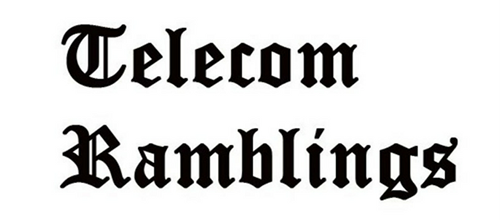How Disaggregation is Shaping the Future of Telecoms in 2024 and Beyond

This article was published in Telecom Ramblings on December 27, 2023. You can read the original article here.
This Industry Viewpoint was authored by Richard Brandon, VP of Strategy at RtBrick
The telecoms industry is undergoing a seismic shift driven by the rapid rise of disaggregation, or the decoupling of hardware from software. This approach already has a strong presence in the mobile RAN (Radio Access Network), but in 2024 and beyond, it will take a firmer hold in the core, at the edge, and, eventually, in every corner of IP networks. Let’s unpack the key trends shaping this industry revolution, including the challenges and opportunities it presents for a transformed future of telecoms.
Moving past the RAN
Disaggregation has already begun spreading from the RAN, enabling greater flexibility, scalability, and cost-efficiency for several operators. For example, AT&T has deployed the approach in its core, and Deutsche Telekom has taken it to the fixed network edge with its Access 4.0 project.
The Access 4.0 project serves as a beacon of potential for disaggregation. The initiative aims to build a fully open fixed network, starting with the access network edge. Imagine a network where advanced components from diverse vendors – open routers, software-defined switches, and white-box hardware – work together seamlessly. The project is pushing the boundaries of network agility and innovation and seeing benefits in return. We’ll likely see more operators following in Deutsche Telekom’s footsteps over the next few years.
Disaggregation can quench AI’s bandwidth thirst
The exponential growth of AI applications will soon strain our networks, which are currently lacking the capacity to handle the massive data volumes and high speeds necessary to AI. Fortunately, disaggregation offers a lifeline. Thanks to bare-metal switches and uncoupled software and hardware, the approach unlocks the required processing power at the network edge, where it’s needed most.
By addressing traditional networks’ bandwidth and flexibility challenges, disaggregation can unlock AI’s true potential – enabling operators to build future-proof infrastructures that can handle tomorrow’s data deluge.
Moving and shaking the vendor landscape
Disaggregation has made space for new vendor relationships to bloom. Traditional equipment vendors, facing the heat of competition, are aiming to stay relevant by acquiring and partnering with innovative, disaggregated players. Ciena’s acquisition of Benu, a software-defined networking (SDN) specialist, and Radisys’ collaboration with RtBrick, are prime examples of this trend. These moves allow established players to inject agility and reliability into their offerings via the integration of open software – ensuring they don’t get left behind in the disaggregation wave.
Additionally, we’re witnessing the formation of powerful cross-vendor alliances aimed at accelerating the adoption of disaggregated solutions. Open Network Foundation (ONF), TIP (Telecom Infra Project), and LF Networking (Linux Foundation Networking) are just a few examples of collaborative efforts. These alliances are breaking down vendor silos and driving the entire industry toward open infrastructure.
Global coalitions join the revolution
In tandem with new vendor relationships, the second half of 2023 saw the formation of several alliances and initiatives promoting open, cloud-native networks. The Global Coalition on Telecommunication (GCOT) and the Cloud Native Manifesto from the Next Generation Mobile Networks Alliance (NGMN), for example, highlight a worldwide commitment to diversity and innovation via disaggregated network architecture. Governments and industry bodies will likely be increasingly active in driving this transformation in 2024.
High availability makes its debut
When it comes to outages, today’s internet users have never been more impatient. Recognizing this, network equipment vendors are prioritizing high-availability features in their software. This ensures rapid service restoration after a failure occurs in BNG (Broadband Network Gateway) hardware or optical access networks, minimizing disruptions for subscribers and keeping them happy and connected.
We can expect additional advancements from disaggregated equipment providers in 2024 that will further improve broadband access.
Meeting 2024 organizational goals
The disaggregated revolution is also helping operators meet their broader company goals, such as:
- Sustainability initiatives: As telecom networks grow increasingly complex, the focus on sustainability will become even more critical. Disaggregation can reduce energy consumption and minimize e-waste through the use of ‘re-purposable’ open bare-metal switches.
- Improved security: Critical network infrastructure has always been a call for security concerns. Disaggregated software can be sourced from trusted democracies, while still bringing the cost advantage of Asian manufacturers.
- Developing new skills: The telecoms industry has a notable talent shortage, and yet, the transition to disaggregated networks requires a workforce equipped with the necessary skills and knowledge. Investing in training and development programs focused on this cloud-native approach will be vital to addressing the potential skills gap and ensuring a smooth and successful transition.
The future is open
The disaggregated revolution is picking up speed, and its impact on the telecoms industry will be profound. By embracing disaggregation, operators can unlock a new era of more reliable, power-efficient, and cost-effective broadband access than what has been previously achieved by traditional networks. The above is just a glimpse into the exciting possibilities that lie ahead, and hopefully it serves as a call to action for all stakeholders in the industry to embrace and take part in this transformative trend that’s leading to a brighter, more connected future.